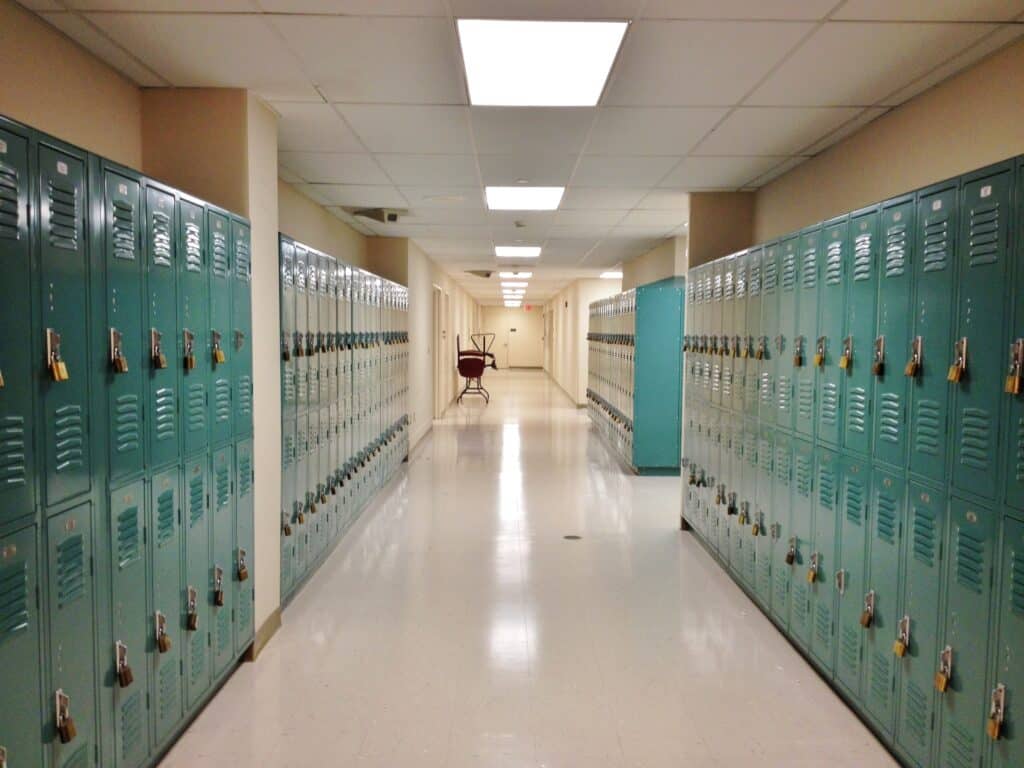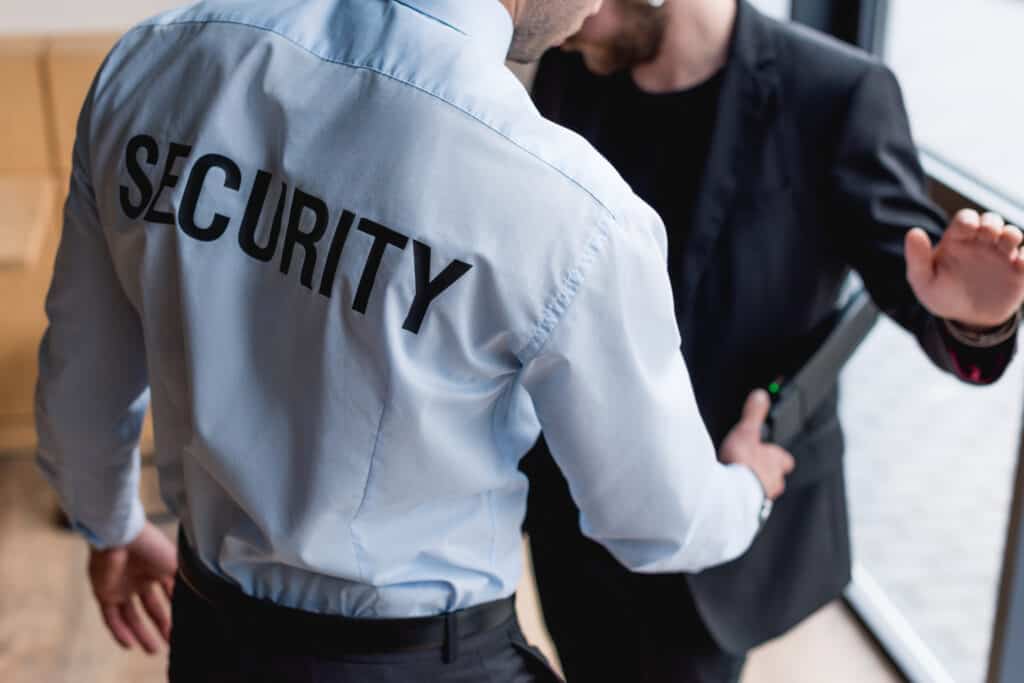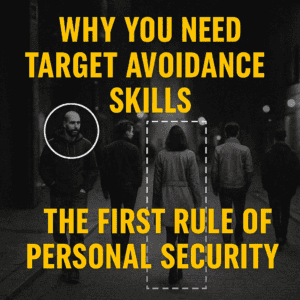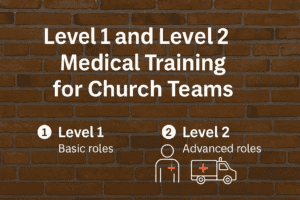In recent years, the issue of school security has become a pressing concern for communities across the nation.
School shootings have unfortunately become a far too common occurrence, fueling the debate on the effectiveness of various security measures in preventing these tragic events.
With that in mind, let’s explore the efficacy of different methods and their direct impact on the reduction of school shootings.
Multiple school security measures have been introduced over the years, ranging from metal detectors and security cameras to the presence of on-site police officers and staff training.
Evaluating the success of these measures requires a thorough analysis of each method, taking into account factors such as financial investment, impact on students’ and staff’s psychological well-being, and overall improvement of safety in the school environment.
Throughout this article, we will delve into the practicality and viability of these security measures, highlighting the strengths and weaknesses of each approach.
By examining the results of existing studies, surveys of school personnel, and case-by-case analyses, our aim is to provide valuable insights for educational institutions that are considering the implementation of additional safety precautions to protect their students and staff from potential threats.
Types of School Security Measures
Physical Security Measures
Schools can implement physical security measures, such as installing secure doors and windows, metal detectors, and video surveillance systems.
These methods help control access to the premises, detect any threats, and maintain a safe environment.
- Secure doors and windows: Reinforced or bullet-resistant doors and windows prevent unauthorized entry and protect against potential gunshots.
- Metal detectors: Used to screen individuals entering the school building, detecting firearms or other dangerous items.
- Video surveillance systems: Schools can use cameras to monitor hallways, entrances, and common areas to identify potential threats or suspicious behavior.
Technological Solutions
Technological solutions can also enhance school security, such as panic buttons, emergency communication systems, and access control systems.
- Panic buttons: Placed in classrooms or administration offices, these buttons send a silent alert to designated personnel and emergency responders, enabling a quick response to potential threats.
- Emergency communication systems: Public address systems, text alerts, and other communication tools notify students, staff, and parents about emergency situations.
- Access control systems: Electronic card readers or biometric scanners allow authorized individuals to enter a school, limiting access to potential attackers.
Policy Implementation
Developing and enforcing security policies and procedures can help schools to respond effectively in crisis situations.
Some suggested policies include threat assessment teams, visitor management procedures, and lockdown protocols.
- Threat assessment teams: Composed of school administrators, counselors, and law enforcement officers, these teams evaluate potential threats and recommend appropriate response measures.
- Visitor management procedures: Schools can establish policies to identify, register, and monitor all visitors on campus, preventing unauthorized access.
- Lockdown protocols: Schools can develop procedures for quickly securing the building, ensuring student and staff safety during an emergency.
Training
Training plays a crucial role in maintaining a secure school environment.
Staff and students should receive training on emergency response plans, first aid, and reporting suspicious behavior.
- Emergency response plans: Regularly practice these plans to ensure that students and staff understand their roles and responsibilities during an emergency.
- First aid: Equip staff members with basic first aid training to address medical emergencies until professional help arrives.
- Reporting suspicious behavior: Educate students and staff on recognizing and reporting warning signs to prevent potential threats.
Effectiveness of Physical Security Measures
Entry Control Procedures
Entry control procedures, such as secure entryways and visitor screening, play an essential role in preventing unauthorized access to schools.
By limiting access points and requiring identification, schools can effectively monitor those entering the premises and deter potential intruders.
Electronic access control systems, such as keycard or badge entry, also help to keep out unauthorized individuals.
Security Personnel Presence
The presence of security personnel and School Resource Officers (SROs) can have a significant impact on school safety.
These individuals can serve as a point of contact for students who feel threatened or wish to report suspicious activity.
They may also act as a deterrent for potential criminals, as these individuals are likely to reconsider their actions when confronted with a visible security presence.
Additionally, security personnel can quickly respond to situations, which could save lives in the event of an emergency.
School Design and Infrastructure
Thoughtful school design and infrastructure can contribute to increased security.
By incorporating features such as secure entry points, clearly marked exits, and surveillance cameras, schools can reduce the likelihood of successful intrusions.
Other design elements, such as natural sightlines, provide clear views of hallways and common areas, allowing staff to more easily monitor student activity.
Schools may also consider installing bullet-resistant glass and panic buttons in classrooms to further aid in keeping students and staff safe during emergencies.
Effectiveness of Technological Solutions
Surveillance Cameras
Surveillance cameras in schools have become increasingly common as a means of enhancing security.
They can serve to deter potential perpetrators and aid in the investigation process following an incident.
Studies show that the presence of surveillance cameras can prevent various forms of crime.
However, their effectiveness in preventing school shootings specifically is not well-documented.
Nevertheless, surveillance cameras remain an essential component of school security and risk management strategies.
Anonymous Reporting Systems
Anonymous reporting systems, such as tip lines and mobile apps, have been implemented in several schools as a method to encourage students and staff to report concerns without fear of retribution.
While these systems have proven effective in some cases, their overall impact on the prevention of school shootings is unclear.
Studies on the effectiveness of anonymous reporting systems have been limited and often anecdotal.
Nonetheless, they serve as a crucial tool for communication and may help law enforcement and school administration identify and address potential threats early on.
Emergency Alarm Systems
Emergency alarm systems, including panic buttons and mass notification systems, aim to minimize response time and streamline emergency communications.
These systems notify law enforcement, first responders, and building occupants about potential threats and emergencies.
While the primary function of emergency alarm systems is to reduce the impact of an incident rather than prevent it, their existence may deter potential perpetrators from targeting a school in the first place.
However, there is limited statistical evidence regarding their effectiveness in preventing school shootings specifically.
Effectiveness of Policy Implementation and Training

Threat Assessment Procedures
Threat assessment procedures are essential in helping schools identify potential threats and take necessary actions to prevent school shootings.
These procedures involve the systematic evaluation of reported threats, behaviors, and incidents to determine their seriousness and likelihood of escalation.
One study suggests that threat assessment is an effective tool for preventing school violence, thanks to its focus on identifying and addressing the specific behaviors that may lead to violence.
However, it is crucial to have a well-trained team and regularly updated policies to maximize the effectiveness of this method.
Lockdown Drills
Lockdown drills are a common component of school safety training, which aim to prepare students and staff for possible threats or incidents.
These drills involve practicing emergency lockdown procedures to secure the building and protect the occupants.
While some argue that lockdown drills are crucial in preparing for potential school shootings, others express concerns about the psychological impact on students.
Although there is limited data on the direct effectiveness of these drills in preventing school shootings, practicing them regularly can improve crisis response and potentially minimize harm during an incident.
Mental Health and Awareness Programs
Mental health and awareness programs play a significant role in preventing school shootings by addressing the underlying causes of violence and promoting healthy behavior among students.
These programs may include mental health support, anti-bullying campaigns, or counseling services.
Research shows that schools that invest in such programs can create safer learning environments and decrease the risk of school violence.
Additionally, raising awareness about the importance of mental health and promoting open conversations can encourage students to seek help when needed, potentially mitigating the risk of violent incidents.
To enhance the effectiveness of policy implementation and training in preventing school shootings, schools must consider each component of their approach—such as threat assessment procedures, lockdown drills, and mental health and awareness programs—and adequately invest in training and support.
Providing appropriate resources and support to staff and students is crucial to establishing a safe and secure learning environment.
Challenges and Limitations
Cost and Budget Constraints
School security measures can be expensive, and many schools face significant budget constraints.
Implementing high-tech security systems, hiring additional security personnel, and conducting regular safety drills can strain limited financial resources.
Consequently, schools often must weigh the potential benefits of these measures against their cost, compromising on the comprehensiveness of their security plans.
Effect on School Environment
It is essential to consider the psychological impact of security measures on students and staff.
Increased security measures, such as metal detectors, surveillance cameras, and police presence, may create a feeling of constant surveillance and suspicion, potentially adversely affecting the school environment.
A balance needs to be struck between ensuring safety and fostering a positive, welcoming atmosphere for learning.
Mixed Results
The effectiveness of various school security measures in preventing school shootings is yet to be definitively proven.
While some studies show a decrease in violence and bullying as a result of these measures, others suggest that their impact can be minimal or even counterproductive.
In some cases, overly stringent security protocols may lead to a false sense of security or exacerbate existing tensions within the school community.
Effectiveness
Determining the effectiveness of specific security measures is challenging due to the complexity and unpredictability of school shootings.
Factors such as shooter motivations, access to weapons, and the influence of mental health issues can vary widely.
As a result, it’s difficult to generalize the success or failure of particular security measures across different schools and incidents.
This uncertainty complicates the decision-making process for schools when selecting the most appropriate security measures for their unique circumstances.
Conclusion
The effectiveness of school security measures in preventing school shootings involves a comprehensive approach that includes various strategies.
One evidence-based method is the implementation of Crime Prevention through Environmental Design (CPTED), which is shown to augment security without increasing a sense of danger by using environmental factors.
Another essential component is addressing mental health.
Schools must prioritize mental health promotion and prevention of mental and behavioral disorders, through regular assessments and support programs.
Fostering a positive school environment that encourages open communication can help identify potential threats and prevent violence.
When evaluating the effectiveness of these measures, it is crucial to remain aware of the potential biases, limitations, and unintended consequences of such interventions.
While no security measure is foolproof, a comprehensive approach that includes various strategies can mitigate risks and have a significant impact on school safety.
Frequently Asked Questions
What types of security measures have proven most successful in deterring school shootings?
Various security measures have been implemented in schools to deter school shootings, such as controlled access, security cameras, and school resource officers. Studies have shown that a combination of these measures, along with mental health programs and monitoring social media, can be effective in deterring potential attacks.
How do mental health programs help in preventing school shootings?
Mental health programs play a crucial role in preventing school shootings. They help identify students who may be struggling with emotional or psychological issues, and provide support to address these problems. Early intervention and support can help prevent violence by addressing the underlying causes.
What role does monitoring social media play in school security?
Monitoring social media plays a significant role in school security by allowing schools to identify potential threats and intervene before an incident occurs. This includes identifying posts related to violence, threats, or warning signs displayed by students. Early detection and intervention can help prevent potential attacks.
How effective are school resource officers in stopping school shootings?
School resource officers (SROs) are trained law enforcement personnel placed on school campuses to maintain safety and security. Their presence can deter potential shooters and provide a quick response in case of an incident. SROs have been found effective in some cases; however, their effectiveness depends on factors like their training, relationship with the community, and school environment.
What impact does controlled access to school facilities have on preventing violent incidents?
Controlled access to school facilities is an important security measure that can help prevent violent incidents. It involves limiting entry points, requiring visitors to check-in, and implementing protocols for entering and exiting school premises. Controlled access can limit the potential for unauthorized individuals to enter school premises, thereby reducing the likelihood of violent incidents.
Do security cameras and surveillance systems help deter potential attacks in schools?
Security cameras and surveillance systems can serve as a deterrent to potential attacks by providing school officials with real-time information on potential threats. They can help identify suspicious behavior or unauthorized individuals on-campus, enabling swift action in case of a threat. Although not foolproof, cameras and surveillance systems can be a valuable addition to a school’s overall security strategy.
Is your school as safe as it could be? Risk Strategy Group can help you find out. Our expert consultants are all certified by the Texas School Safety and Security Consultant Registry and are skilled in conducting comprehensive safety and security audits.
We can identify potential vulnerabilities, offer actionable recommendations, and help you implement robust security measures. Don’t wait for a crisis to reveal the gaps in your school’s safety plan. Contact Risk Strategy Group today and let’s ensure your school is a safe learning environment for everyone.








